For years, polyvinylidene fluoride, or PVDF, has been the leading paint/coating system in the architectural standing seam metal roofing industry. Now, PVDF is experiencing demand shifts that are making it challenging for paint suppliers to keep up with the demand, which is also increasing PVDF’s price.
However, there are other quality paint systems available as a coating on the metal products used in standing seam metal roof systems – one of which is SMP, or silicone modified polyester.
So, how much do you know about SMP paint systems? Do you know the pros and cons of this paint system? Or when it’s best for your project and when it’s not?
Sheffield Metals is a leading distributor in painted and unpainted metal sheets and coils – including SMP-coated products. We know that education about the various alternatives and options is critical for consumers, which is why we think discussing the ins and out of SMP is important.
In this article, expect to learn:
- What SMP is
- The advantages/pros of SMP
- The disadvantages/cons of SMP
- When SMP is a good fit for your project
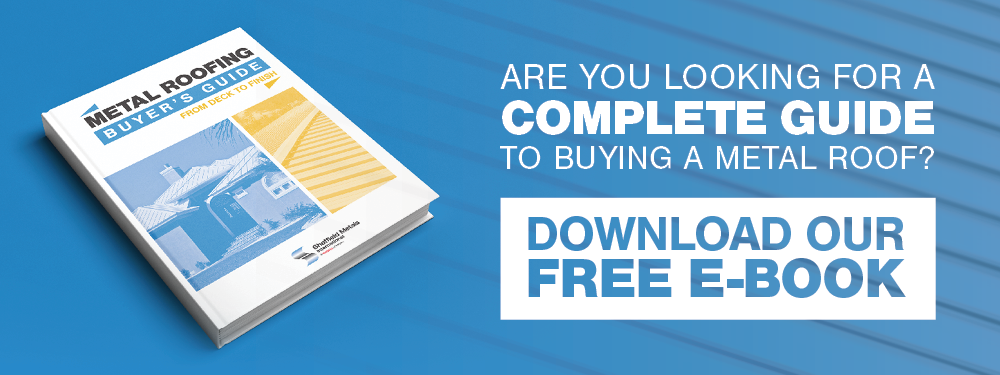
What is Silicone Modified Polyester (SMP)?
Silicone modified polyester (SMP), also referred to as silicone-protected or siliconized polyester, is an architectural paint system used to coat metal sheet and coil products. According to Metal Coaters, SMP paint systems blend polyester for weather resistance and silicon for gloss retention into one formula.
SMP is usually considered a step below PVDF in terms of performance in standing seam metal roofing. This is because SMPs are more likely to experience chalking and fading sooner than PVDF-coated roof systems.
However, the technology of SMP has advanced over the years, which has made it a much more viable option for use in residential, commercial, agricultural, and architectural projects.
Why SMP Use Is Expected to Grow
In early 2022, the entire metal roofing market is experiencing a disruption in getting PVDF-coated products due to shifted demands and new expanded uses of PVDF in other industries.
We have a full article dedicated to this topic, but to recap: PVDF is a product used to produce batteries for electric vehicles (EVs) and battery solutions for renewable energy systems, both of which are in high demand. Battery and EV manufacturers are willing and able to pay higher prices for PVDF than the traditional architectural metal construction industry. This puts PVDF manufacturers in a spot where they’re more inclined to sell to the market that will pay a premium for their products, which is why more PVDF is allocated to the battery and EV manufacturers. Additionally, China is keeping much of its PVDF in the country to assist with battery manufacturing.
In mid-January, nearly all metal roofing suppliers (including Sheffield Metals) that purchase PVDF coatings are now on allocation from their paint suppliers. This means that we’re going to be able to continue to get PVDF coatings at the level we’re currently purchasing it, and maybe a little more than we have historically. However, paint suppliers (such as Sherwin-Williams) will not have enough PVDF to take on too many new customers while PVDF supplies are low.
Due to this lack of PVDF, many contractors and panel manufacturers are looking for alternative paint systems to add to their product offerings, including SMP systems. To help, let’s go through the benefits and drawbacks of SMP, and why this system might be a viable alternative paint system for your metal roofing project.
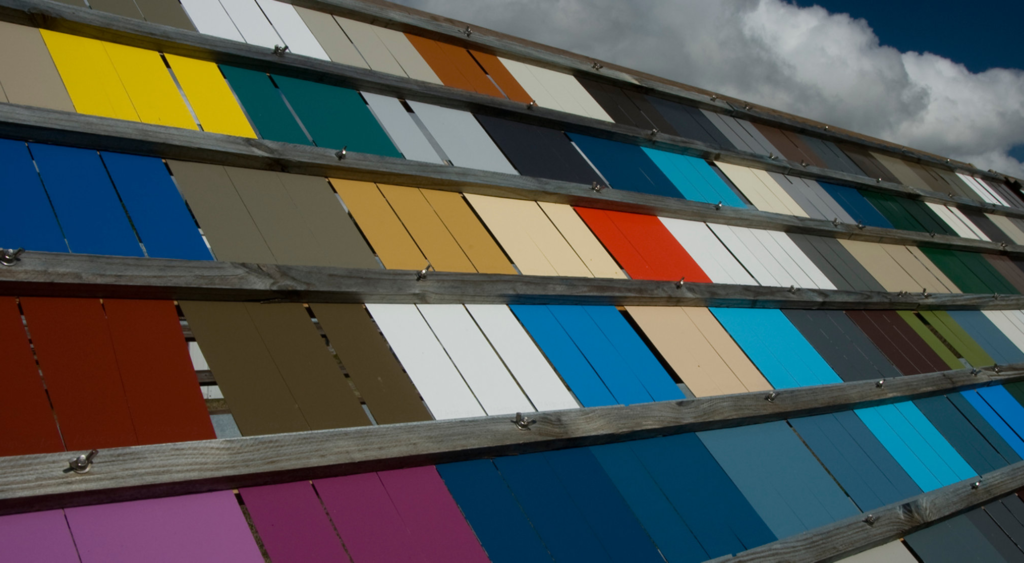
Advantages & Pros of SMP Paint Systems
Superior scratch resistance
One of the most significant benefits of SMP is that it’s a harder paint system than PVDF, which makes SMP-coated material more difficult to scratch. Panels with an SMP paint system can withstand a higher level of improper handling during the manufacturing or installation of a roof. You might even notice that SMP-coated metal often doesn’t have a PVC film on top of it because it’s overall more scratch-resistant.
Film adhesion warranty
Another benefit of SMP paint systems is that the film adhesion part of the paint/finish warranty is often the same as PVDF. For example, at Sheffield Metals, we offer a warranty covering cracking, flaking, or peeling (loss of adhesion) to an extent apparent on ordinary outdoor visual observation for up to 40 years. This is the same film adhesion coverage available on our PVDF-coated products.
Lower cost & more affordable
One of the most notable benefits of SMP is that it comes at a much lower price point than traditional PVDF-coated materials, making it a more affordable option for some standing seam projects. As of early 2022, PVDF costs about 60 to 80% more than SMP. Keep in mind that PVDF prices continue to rise, creating a higher gap between SMP and PVDF pricing.
The lower price of SMP is why it’s traditionally used in structural and agricultural metal roofing applications. Though, advancements in SMP formulas have expanded it into more architectural, residential, and commercial projects.
Additionally, there are types of SMP paints that cost more than others, including those formulated with ceramic pigments for improved resistance to fading.
Textured finishes available
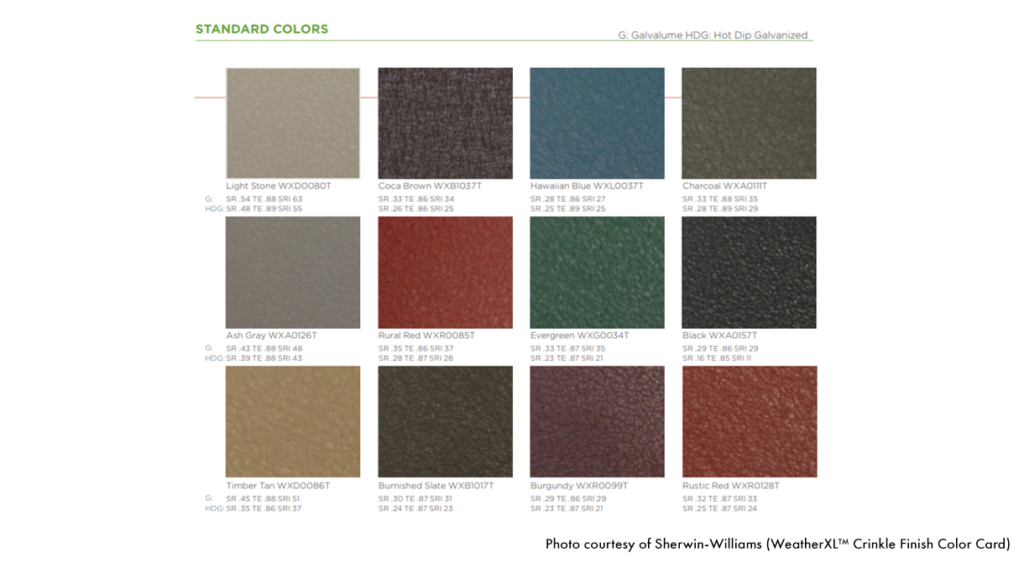
Another reason SMP is experiencing growth in the architectural metals industry is that textured finishes, such as Sherwin-Williams’ WEATHERXL™ CRINKLE FINISH or AkzoNobel’s CERAM-A-STAR®, are formulated with SMP paint systems. Textured finishes are unique because they provide an enhanced visual depth on flat panels that you don’t get from solid colors. Plus, it can help minimize the appearance of oil canning, which can occur with flat standing seam panels.
Best of all, these textured paint systems are typically applied to 26 or 24-gauge Galvalume, so it becomes more in line with architectural standing seam system requirements.
Performs well in most environments
SMP coatings are the mid-level paint system for standing seam metal roofs. While this coating will not keep its color pigment for as long as PVDF does, it will still perform well if exposed to regular environments. Because SMPs are more rigid, the coating is a great option to defend against moisture, temperature, and other weather degradations.
Offers more gloss options
SMPs come with a wide variety of gloss options, anywhere from low gloss to medium-high gloss. Plus, the SMP formula’s silicon helps retain the gloss for years after the installation.
Disadvantages & Cons of SMP Paint Systems
Lower color integrity
One of the main differentiators between SMP and PVDF is that SMP colors will not fade at the same level that PVDF systems do. Fading on painted metal roofing or walls occurs when substances like water, pollution, and chemicals in the atmosphere and specific environments react with the paint’s pigment. The color pigments in SMP systems break down in less time, which will lead to color fading sooner than a PVDF system of the same color.
On top of that, SMPs are also more likely to chalk more over time. For reference, chalking is the whitish residue that can become visible on a painted or coated metal surface over time. As a panel is exposed to sunlight and UV rays, the resin breaks down and degrades. Once the resin starts to break down and continues to be exposed to the elements, it loses its adhesion to the surface, and those degraded particles begin to turn white. These white chalking particles will become more apparent over time.
Less chalking & fading coverage
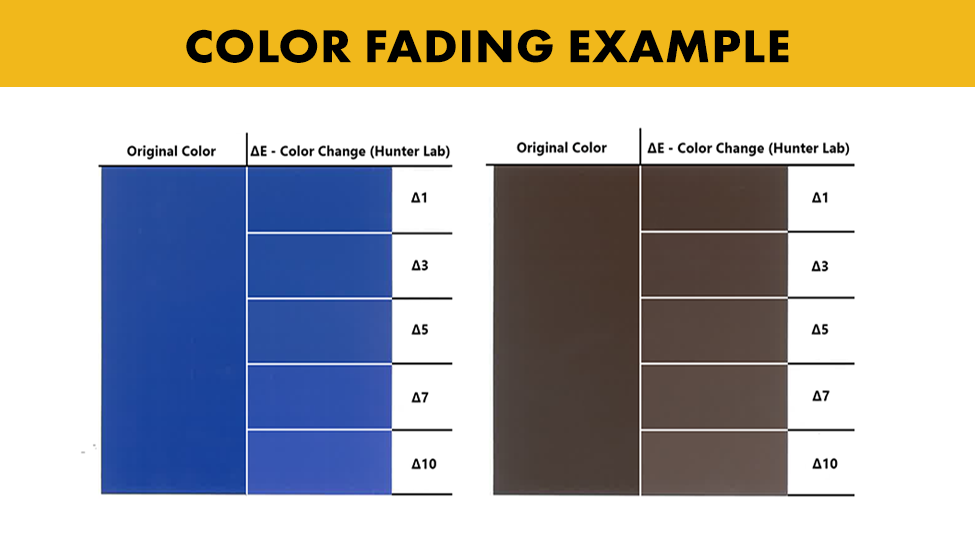
While the film adhesion on SMP is covered for 40 years, chalking and fading (up to a specific point) are only covered for 30-years.
To illustrate how chalking and fading coverage on SMP is less when compared to PVDF, here is a chart comparing SMP chalking and fading coverage with the PVDF chalking and fading coverage:
| Fading coverage length | Fading units (the lower the Hunter unit, the better the performance) | Chalking coverage length | Chalking number (the higher the chalking number, the better the performance) | |
| SMP | 30 years | 7 Hunter delta-E unites for roofs (horizontal) 5 Hunter delta-E unites for walls (vertical) | 30 years | 6 rating on roof panels (horizontal) 8 rating on rating on walls (vertical) |
| PVDF | 30 years | 5 Hunter delta-E unites for roofs & walls | 30 years | 8 rating on rating on roofs & walls |
What you’ll notice is that SMPs have different chalking and fading ratings for roof panels than PVDF systems, both of which are less-performing numbers. In essence, this means that SMPs are expected to chalk and fade more within 30 years than PVDF systems.
We recommend reading the fine print of a finish/paint warranty to understand how coverage changes based on the paint system.
Not recommended for bright, vivid colors
Due to the higher level of fading and chalking with SMP panels, bright and vivid colors aren’t usually recommended. For example, bright colors like Regal Red, Regal Blue, and Evergreen will noticeably fade differently than a lighter gray or beige color. That’s why many suppliers’ SMP offerings have more earth tones or lighter colors that will better maintain the aesthetic than a bright blue or red color. Brighter, more exotic colors are better suited for PVDF or FEVE type systems because their resins protect the color pigments for more extended periods.
When Should You Choose an SMP Paint System?
Now that you’re aware of the benefits and drawbacks of SMP paint systems, when is SMP a good choice for your project?
#1: If other paint systems are out of your price range or budget.
As the cost of PVDF increases, many contractors and manufacturers will look to offer more affordable options, like SMP, to their customers. While some projects are better suited for other paint finishes, SMP is an affordable option to consider for more restrictive project budgets.
#2: If you’re choosing an earth tone color that isn’t vivid or too bright.
As we discussed, the lighter or earthier the SMP paint color is, the better it will look over time. So, if you’re installing a color like Regal White, Ash Gray, or Sandstone, SMP might be a good choice for you.
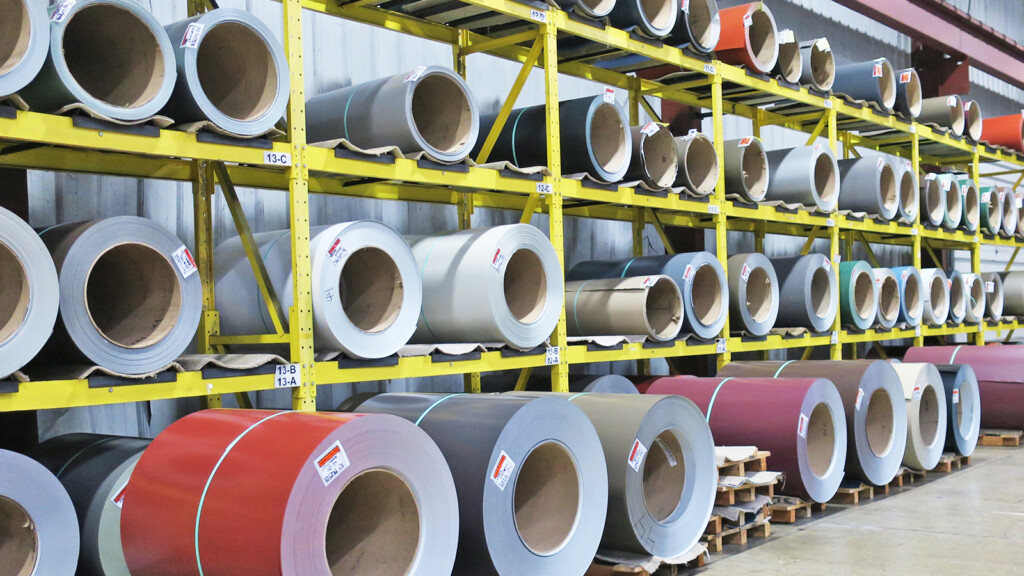
#3: If you’re installing a wall panel profile.
SMPs are commonly used for wall panel systems because the chalking and fading numbers are the same for SMP vertical (wall) panels as PVDF horizontal (roof) panels. This makes it a great option that will hold up well in vertical siding applications.
#4: If you want your system to have a textured finish.
Textured finishes are growing in popularity, as it offers something a little more distinctive than a flat panel with one color. Most of these textured systems are SMP-based.
Final Thoughts on SMP Paint Systems
Silicone modified polyester paint systems have come a long way in the last decade or two, which has allowed them to become a more realistic option for architectural metal roofing systems.
So, should you choose SMP or PVDF or another paint option? Well, it depends.
To help you determine if SMP is right for you, make sure to consider the following questions:
- Is your project a bright, vivid color? Or, are you considering a lighter or Earth tone?
- Do you want a textured finish on your system?
- What is your budget?
- What are your warranty expectations/requirements?
- Is the paint system you’re considering available and in your price range?
- Do you live in an area with significant sun exposure?
For over 25 years, Sheffield Metals has been helping our customers and their customers choose the paint system that is best for their projects. Whether it’s SMP, PVDF, or beyond – we’re dedicated to working with you to get the standing seam solution that will last for decades in your environment.
Have questions about the changing PVDF market and how choosing SMP could be the right choice for you? Reach out to us today to discuss this with one of our knowledgeable roofing specialists.
